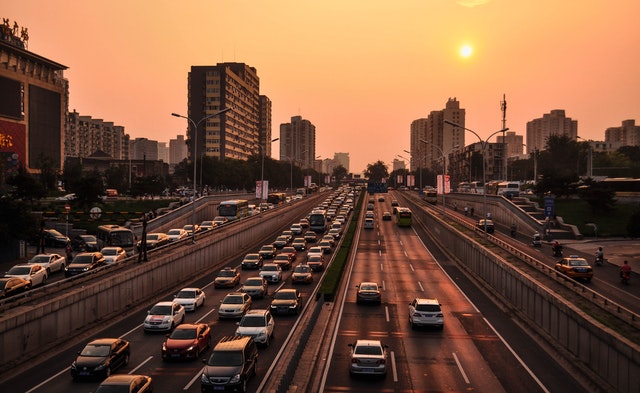Even though the COVID-19 pandemic presented new challenges to the transport systems, it created an opportunity for innovation and digitization. The transport industry has made significant progress in the past decade, notably the development of electric vehicles (EV) and autonomous vehicles (AV).
In addition, key players in the transport sector are committed to enhancing transit accessibility, improving the rider experience, reducing carbon emissions, and upgrading vehicles. In 2022, innovators are banking on new technologies like EV and AV to revolutionize the transport industry.
Take a look at the trends in the transportation industry in 2022.
Increased Focus on Sustainable Transportation
The global transportation sector is a major polluter, responsible for 37% of the global greenhouse gas emissions. Even though CO2 emission from the transport sector dropped from 8.5 GT in 2019 to 7.2 Gt in 2020, the figure is expected to rise because of the demand for passenger and cargo transport growth.
Organizations like the United Nations (UN) are mounting pressure on manufacturers to help protect the environment by prioritizing sustainability. In 2022, auto manufacturers are expected to focus more on environmental, social, and governance (ESG) standards by developing more electric vehicles (EVs).
The prices are expected to gradually drop in 2022 because many brands are shifting to developing EVs to protect the environment.
Self-Driving Trucks (Automated Vehicles)
The global self-driving truck market is projected to grow by $864 million between 2022 and 2026, attracting investment from auto manufacturers. Even though automated vehicles will not replace drivers, truckers, and helms persons in an unforeseeable future, 2022 will mark the entry of different brands of self-driving cars.
In the past decade, auto manufacturers have been exploring technologies such as hands-free steering, adaptive cruise control, hands-on lane-centering steering, and automatic emergency braking to make self-driving cars a reality.
Self-driving cars will eliminate off-hours, streamlining auto transport because machines do not require breaks. In addition, automated vehicles will contribute to environmental sustainability because they are electrically powered.
Mobility as a Service (MaaS)
The idea of Mobility as a Service (MaaS) began in the 1990s but has gained momentum in the last decade. MaaS digitally integrates different transport services into one mobility service on demand.
The goal of MaaS is to streamline supply and demand, and the global market is expected to reach $40.1 billion by 2030. MaaS is expected to become a notable trend in transportation in 2022 as keep players are striving to provide demand data, transport, and payment in a single platform.
Asia, Europe, and North America have taken the lead in adopting MaaS, and Latin American countries, such as Chile, Columbia, Mexico, and Peru, are expected to help mitigate issues around traffic congestion, improve environmental sustainability, and provide a better value proposition for businesses.
Transportation Digitization and Use of Artificial Intelligence (AI)
Digitization is reshaping the transport sector as companies are expected to use telematics data to monitor their drivers. Since auto transport companies own vehicles from different manufacturers, there is a need to increase the transport system’s digitization.
Integrating technology in transportation in 2022 will offer transport companies new opportunities to provide customers with digital services and help optimize transport operations. On the other hand, the transport sector will continue to explore the use of Artificial Intelligence (AI) to revolutionize the transport sector.
In addition to the development of self-driving cars, AI models will be used to collect and process data relating to traffic congestion, public safety, efficient transportation of goods and services, and scheduling. Plans are also underway to use AI to design optimal transit networks in cities.
Supply Chain Disruption
The shortage of silicon chips caused by an increase in silicon metal prices, the COVID-19 pandemic, and the global energy crisis has disrupted the technology world. The transport industry is one of the industries hit hard by the silicon shortage.
Car manufacturers are shutting down their production plants because of a shortage of silicon used to make microchips, gaskets, and sealants. Since the reasons behind the silicon shortage are not easy to resolve, the transport industry will continue to experience supply chain disruption in 2022.
In addition, since the demand for battery supplies for EVs is fast-growing, a lithium shortage is expected soon.
Wrapping Up
Even though there are supply chain concerns and challenges, 2022 will be a revolutionary year for the transportation industry. Like many other sectors, the transportation industry experienced disruption because of the COVID-19 pandemic, but it also resulted in new technologies and innovations. The growth of the global transportation market is projected to grow because of these 2022 trends and changes in the sector.


